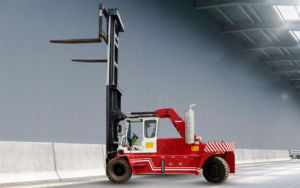In the bustling world of logistics and shipping, container handling equipment plays a pivotal role in ensuring the smooth operation of supply chains. However, the efficiency of these operations hinges significantly on the safety protocols and best practices implemented.
Operating heavy machinery like container handling equipment comes with inherent risks. Without stringent safety protocols, accidents can lead to severe injuries, fatalities, and substantial financial losses. By adhering to established safety guidelines, companies can protect their employees, reduce downtime, and enhance overall productivity.
Operators must undergo rigorous training to understand the functionality and safety features of the equipment. Training should include both theoretical knowledge and practical hands-on experience.
Routine maintenance checks and inspections are crucial to identify and rectify potential hazards. Equipment should be serviced regularly to ensure optimal performance and safety.
Personal Protective Equipment (PPE)
Operators and ground staff should wear appropriate PPE, including helmets, high-visibility vests, gloves, and safety boots. PPE minimizes the risk of injury in case of accidents.
Clear Communication Systems
Effective communication between operators and ground staff is vital. Use of radios, hand signals, and standardized communication protocols can prevent misunderstandings and accidents.
Each piece of equipment has a specified load limit. Exceeding these limits can lead to equipment failure and accidents. Operators must always adhere to these limits.
Safe Operating Speeds
Operators should maintain safe speeds, especially in congested or high-traffic areas. Sudden movements or high-speed operations increase the risk of accidents.
Comprehensive emergency protocols should be in place. Operators must be trained to handle emergencies like equipment malfunction, spills, or accidents.
The Empty Container Stacker is designed to handle empty containers efficiently, ensuring they are moved, stacked, and stored safely. Here are some best practices:
The Sheet Pack Lifter is used to handle heavy sheet packs efficiently. Key best practices include:
The Eye to Sky Coil Handling equipment is specialized for lifting and positioning heavy coils. Best practices include:
The coil-handling tong System is used for precise handling of heavy coils. Key best practices include:
Safety protocols and best practices are integral to the safe and efficient operation of container handling equipment. By investing in comprehensive training, adhering to maintenance schedules, and implementing stringent safety measures, companies can minimize risks and enhance productivity. Specific equipment like the Empty Container Stacker, Sheet Pack Lifter, Eye to Sky Coil Handling, and Coil Handling Tong System each come with their own set of best practices, ensuring they are used safely and effectively. By prioritizing safety, companies not only protect their workforce but also ensure smooth and uninterrupted operations, ultimately contributing to their bottom line.
Embrace these safety protocols and best practices to create a safer, more efficient working environment, and set a benchmark for excellence in the container handling industry. Excellent Engineering & Allied Services specializes in manufacturing Container Cargo Handling Equipment and provides a range of services including maintenance, repair, and operational support. Their expertise extends to ensuring optimal functioning and longevity of handling equipment, catering to the diverse needs of industries reliant on efficient cargo handling and logistics operations.

